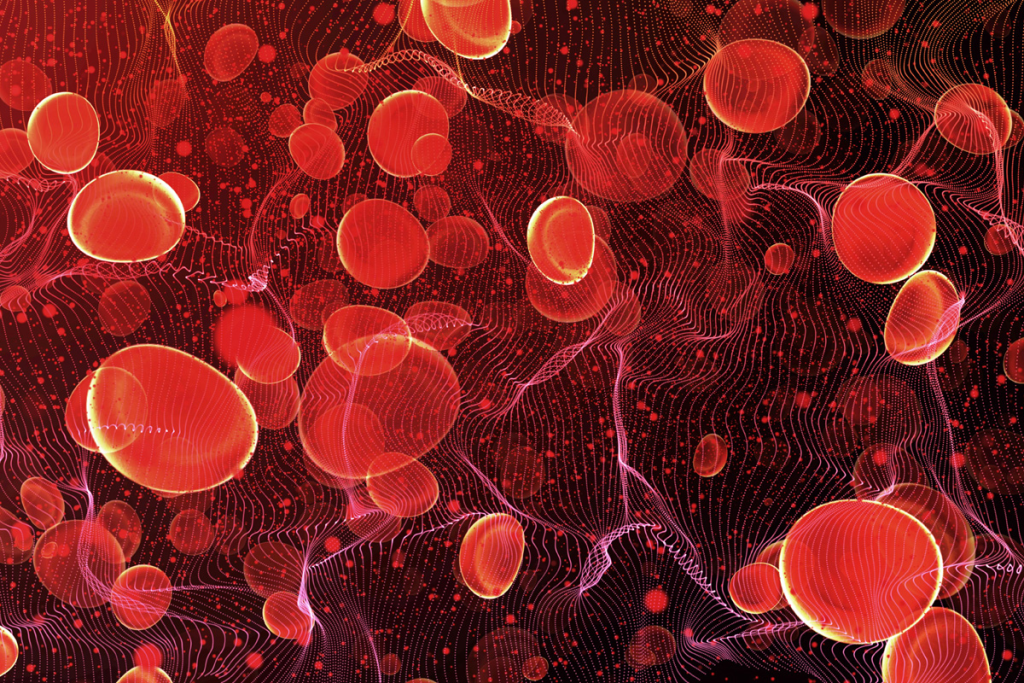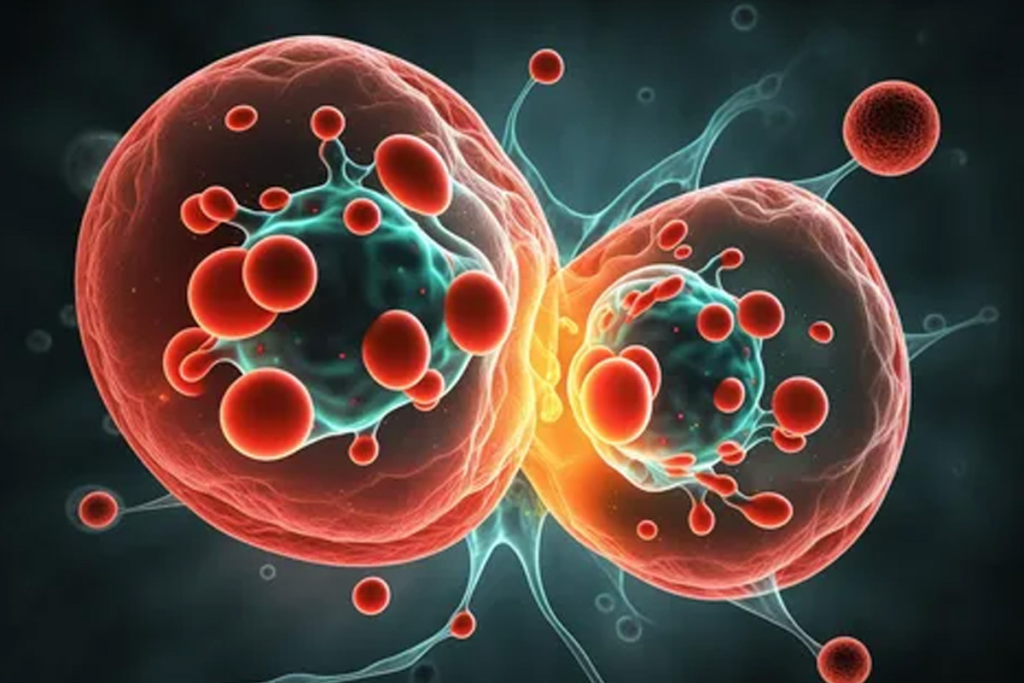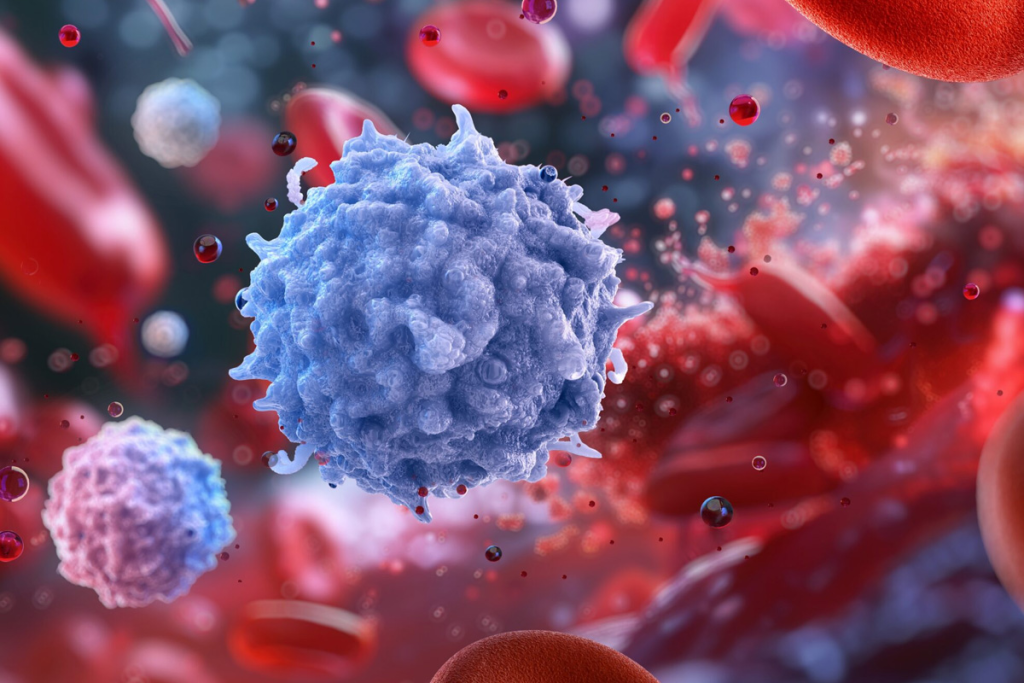
Recent studies have shown the huge promise of cord blood pluripotent stem cells in regenerative medicine. This has sparked a lot of interest in their healing abilities. These cells can turn into different types of cells, which is good news for treating many diseases.
Scientists are studying how these cells can change and grow into different types. This research has big implications for medical treatments. As we learn more about pluripotential stem cells, their role in improving healthcare is becoming clearer.
Umbilical cord blood was once seen as waste. Now, it’s known for its valuable stem cells. These stem cells can turn into different blood cells, helping with medical treatments.
Umbilical cord blood stem cells are hematopoietic stem cells taken from the umbilical cord after birth. They can become all types of blood cells.
Getting cord blood is safe and doesn’t hurt. It’s taken from the umbilical cord and placenta after birth. The blood is then stored in special places called cord blood banks.
There are public and private cord blood banks. Public banks use the blood for anyone. Private banks save it for the family’s future use.
Cord blood banking started in the late 1980s. The first successful transplant was in 1988 for a child with Fanconi anemia. Now, thousands of transplants happen every year.
Medical technology and understanding stem cells have driven this growth. It shows how important these cells are for health.
Stem cell potency is key in stem cell biology. It shows how many cell types a stem cell can turn into. This is important for using stem cells in fixing damaged tissues and organs.
Stem cells are sorted into types based on their power. Totipotent stem cells can turn into any cell type, including placental cells. They are found in the very early stages of a developing embryo.
Pluripotent stem cells can turn into almost any cell type, except placental cells. They can form the three main germ layers: ectoderm, endoderm, and mesoderm. Multipotent stem cells can turn into several cell types, but only within a specific group or tissue.
Finding molecular markers of pluripotency is vital. These markers help tell if a stem cell is truly pluripotent. Key markers include OCT4, SOX2, and NANOG. They help spot pluripotent stem cells from those with less power.
There are many scientific methods to check stem cell potency. In vitro differentiation assays guide stem cells to become specific cell types. In vivo teratoma formation assays check if stem cells can form tumors with cells from all three germ layers. These tests show how well stem cells work.

The ability of cord blood stem cells to become many types of cells is a topic of debate. Recent studies have shown these cells can turn into different cell types. This has sparked interest in their use for treatments.
Many studies have shown cord blood stem cells can be very versatile. Research has shown they can become various cell types, like blood cells and skin cells. For example, a study in Stem Cells found these cells have markers of pluripotency, like OCT4 and NANOG.
Even with evidence, some studies question how versatile these cells are. Critics say their ability to change into different cells might be limited. A study in Cell Transplantation showed that not all cord blood stem cells are equally potent.
Scientists agree that cord blood stem cells have some versatility. But, how much they can do is not fully understood. The different results from studies show how complex stem cell biology is.
Cord blood stem cells are different from embryonic stem cells (ESCs). ESCs are from embryos and raise ethical issues. Cord blood stem cells, on the other hand, come from umbilical cords and avoid these concerns. Yet, they might not be as versatile as ESCs. This highlights the need for more research into their unique traits and uses.
Non-embryonic stem cells come from adult tissues and are promising for treatments. They are found in bone marrow, fat tissue, and dental pulp. Each source has its own special traits and uses.
Bone marrow stem cells are studied and used in medicine. They can turn into different cell types. This includes blood cells and support for the bone structure.
Stem cells from fat tissue are popular because they’re easy to get. They can grow into many cell types. This makes them useful for fixing damaged tissues.
Dental pulp stem cells are from tooth pulp. They can help fix dental problems. They also have uses in other medical treatments.
Induced pluripotent stem cells (iPSCs) are made from adult cells. They act like embryonic stem cells but without the ethical issues. They’re great for making treatments that fit each person’s needs.
Looking at these stem cell sources shows their wide range of uses in medicine. Knowing what each source can do is key to improving healthcare.
Cord blood stem cells can turn into many different cell types. This makes them very useful for fixing damaged tissues and for research. They can become various cell types, which is great for healing and studying.
Cord blood is full of hematopoietic stem cells (HSCs). These cells are key for making blood cells. Hematopoietic differentiation lets these stem cells become all kinds of blood cells. This is important for making new blood cells and is being studied for medical use.
Cord blood stem cells can also become epithelial and endothelial cells. Epithelial cells cover organs and glands, and endothelial cells line blood vessels. Research shows these cells can help fix damaged tissues and grow new ones.
Studies also show cord blood stem cells can turn into neural cells. This includes neurons and glial cells. This ability could help treat brain diseases.
Cord blood stem cells can also become mesenchymal lineage cells. These include cells for bone, cartilage, and fat. These cells are vital for fixing connective tissue and bone.
In summary, cord blood stem cells can become many cell types. This is very promising for fixing damaged tissues and for research. More study is needed to fully use their healing power.
Cord blood stem cells are leading the way in regenerative medicine. They offer new ways to repair tissues and treat diseases. Their unique abilities make them a promising choice for many treatments.
Cord blood stem cells have been used to treat blood disorders like leukemia and lymphoma. Over 30,000 cord blood transplants have been done worldwide. This shows they are good at rebuilding the blood system.
Studies support using cord blood in medicine. It has fewer side effects and can come from unrelated donors.
Scientists are looking into using cord blood stem cells for more conditions. Experimental therapies are being made for cerebral palsy, autism, and type 1 diabetes, among others.
Cord blood stem cells help fix tissues in different ways. They can turn into specific cells and release paracrine factors that aid healing.
“The paracrine effect of cord blood stem cells plays a critical role in controlling the immune system and improving tissue repair.”
A Stem Cell Researcher.
Cord blood cellular therapy uses cells from cord blood to treat diseases. This method is being studied for its role in regenerative medicine. Researchers are looking into its safety and effectiveness.
The future of regenerative medicine will likely be influenced by cord blood stem cells. Ongoing research into their uses is promising.

Using cord blood stem cells is promising but comes with challenges. As research finds more about these cells, some big limitations have shown up.
Getting and growing cord blood stem cells is a big technical challenge. It needs advanced methods to extract and grow them for treatment. Limited cell numbers in cord blood units make treatments less effective, posing a big challenge.
Rules for using cord blood stem cells differ a lot around the world, causing commercialization hurdles. Companies face complex rules to get products to market. This can be expensive and slow.
Even though cord blood stem cells are not embryonic, ethics are key. It’s important to get donors’ consent and deal with worries about misuse.
Keeping these cells good over time needs top-notch storage tech and quality checks.
In short, cord blood stem cells are promising but need to overcome technical, regulatory, ethical, and storage challenges. This is key for their use in regenerative medicine.
The future of cord blood stem cells in regenerative medicine is exciting. New technologies and research methods are coming. These will make cord blood stem cells even more useful for healing.
Gene editing, like CRISPR/Cas9, is being tested to change cord blood stem cells. Also, new materials and engineering are helping these cells work better.
Researchers are looking at mixing cord blood stem cells with other treatments. This could make treatments more powerful. It might help fix many diseases.
Using cord blood stem cells for personalized medicine is a big deal. Scientists are working on making treatments fit each person’s genes.
New technologies and methods will be key in the future of cord blood stem cell treatments.
Cord blood stem cells are a promising tool in regenerative medicine. They can help treat many diseases and injuries. These cells can turn into different types of cells, making them useful for therapy.
These stem cells can become many cell types, like blood cells and skin cells. This ability is key for fixing damaged tissues. It’s what makes them so valuable in regenerative medicine.
As scientists learn more about cord blood stem cells, their importance grows. They are likely to be a big part of new treatments for many health issues. This is thanks to ongoing research and progress in the field.
Cord blood stem cells come from the umbilical cord after birth. They are packed with stem cells that can grow into different types of cells.
Research suggests cord blood stem cells can grow into many cell types. But, there’s debate on how fully they can do this.
After birth, stem cells are taken from the umbilical cord. They are then frozen for future use in a cord blood bank.
Cord blood stem cells are not from embryos. They are different from embryonic stem cells, which come from embryos.
References
Poliwoda, S., Gurtowska, N., Gaweş‚, J., et al. (2022). Stem cells: a comprehensive review of origins and biological properties. Stem Cell Reports, 16(1), 1-25. https://doi.org/10.1016/j.stemcr.2022.05.003
This review discusses definitions of totipotent, pluripotent, multipotent cells and compares their origins and biological properties, including cord blood stem cells. PMC
Aprile, D., Zanotti, S., Pugliese, L., et al. (2024). Multipotent/pluripotent stem cell populations in stromal tissues: a comparative overview. Frontiers in Cell and Developmental Biology, 12, Article 11089765. https://doi.org/10.3389/fcell.2024.11089765
Discusses stromalderived cells (including from cord blood and other tissues) and interrogates whether some identified populations exhibit pluripotent characteristics. PMC
Cancedda, R., et al. (2024). The Phoenix of stem cells: pluripotent cells in adult tissues. Frontiers in Bioengineering and Biotechnology, 12, 1414156. https://doi.org/10.3389/fbioe.2024.1414156
Investigates whether pluripotent stem cells persist in adult tissues (including cord blood), and reviews evidence and controversies around that topic. Frontiers
Rosner, M., Lömker, I., & Richter, T. (2023). Multipotent fetal stem cells in reproductive biology research. Stem Cell Research & Therapy, 14(1), 279. https://doi.org/10.1186/s13287-023-03379-4
This work clarifies what “multipotent means in fetal stem cell contexts and contrasts with pluripotency. Useful for explaining lineage limits. BioMed Central
van de Ven, C., de Jongh, R., et al. (2007). The potential of umbilical cord blood multipotent stem cells: an overview. Journal of Cellular Physiology, 212(2), 191-200. https://doi.org/10.1002/jcp.20986
Older but well-cited study discussing how cord blood stem cells can differentiate into multiple lineages, mostly in hematopoietic and some non-hematopoietic directions, but not fully like embryonic pluripotent stem cells. ScienceDirect
Subscribe to our e-newsletter to stay informed about the latest innovations in the world of health and exclusive offers!
WhatsApp us